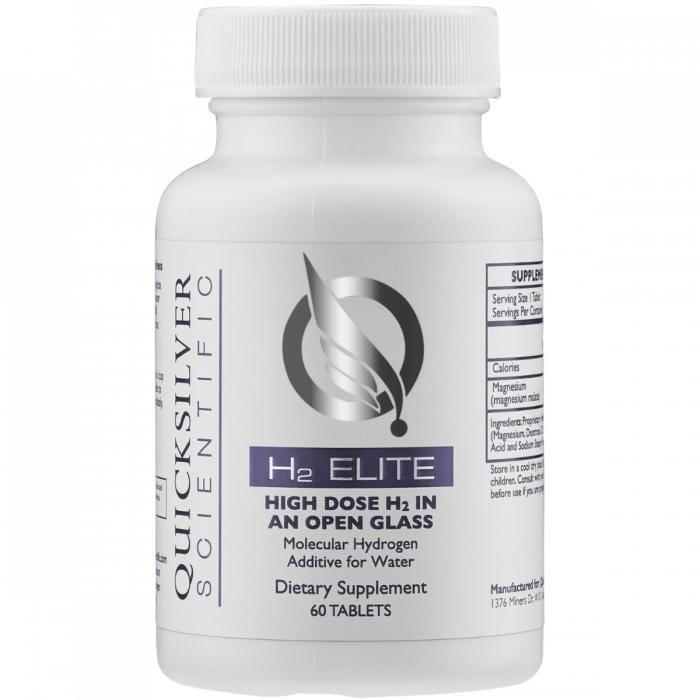 10月 28, 2025
10月 28, 2025
Recently, the Make Europe Healthy Again initiative launched, bringing together global leaders united in their commitment to health and in partnership with the Make America Healthy Again movement. While many of us have been dedicated to this mission for decades, this new MAHA-MEHA alliance represents a powerful and inspiring step forward for global wellbeing, as well as a welcome and triumphant commitment to the health of humanity.
Heavy and toxic metals are a growing concern in food on both sides of the pond. The aluminum levels Moms Across America and others are finding should be a five-alarm siren blaring from well-funded regulatory agencies of the US, UK, and EU, not a group of moms with a limited budget. New test results reveal extremely alarming levels of aluminum, high levels of arsenic, lead, and concerning levels of cadmium in popular children’s cereal from France and Germany.
Summary of New France and Germany Cereal Test Results
- Astonishingly high aluminum in Lucky Rings (Germany) → 1800 ppm aluminum which is 1,800,000 ppb - 164.75% higher than the weekly limit for a child
- Dangerous levels of arsenic - Rice Krispies (France) → 149 ppb arsenic - 1,242% higher than the EFSA child-benchmark amount for a 30g serving.
- Concerning levels of cadmium and lead- Funny Honeys (Germany) → 39.20 ppb cadmium and 47.60 ppb lead - 21- 47 X higher than safe levels
Comparison of USA, UK, France and German Popular Children’s Cereals
- U.S. cereals contained 100% higher arsenic and 31% higher aluminum than the overall average of the U.K., France, and Germany.
- Kashi Organic Cinnamon Harvest (single 30-gram serving) would expose a 45-pound child to approximately 7.5% more aluminum than the European Food Safety Authority’s (EFSA) maximum weekly safety limit.
- Kellogg’s Rice Krispies (USA) had 1,240% more arsenic than the European Food Safety Authority’s (EFSA) maximum safe level for children.
What are the Regulatory differences?
- FDA (U.S.) → Exceeding “action levels” = grounds for enforcement, but not automatically illegal.
- EU/EFSA → Exceeding “maximum levels” = automatically illegal to sell.
The aluminum levels were particularly shocking.
Aluminium
- According to the European Food Safety Authority (EFSA), a Tolerable Weekly Intake (TWI) of 1 mg aluminium per kg body-weight per week was established in 2008. European Food Safety Authority+2Eufic+2
- EFSA noted that many people’s dietary exposure may already exceed the 1 mg/kg bw/week reference. AGES+
- A single 30-gram serving of Classic Lucky Rings (Germany) which had 1800 ppm aluminum would expose a 45-pound child to approximately 165% more aluminum than the European Food Safety Authority’s (EFSA) maximum weekly safety limit.
- More information on the impact of aluminum here.
Where are the aluminum and heavy metal contaminants coming from?
 Moms Across America calls on authorities to investigate the possible connection between geoengineering, which includes spraying aluminum to create clouds to “block out the sun” or induce rain to change the weather. The ingredients, such as wheat flour, may contain high residues of aluminum from aerial spraying. Other sources may include packaging, grinding equipment/factory machinery, or additives for anti-caking in flours. The aluminum levels in cereals, baby formula, cookies, and many other foods are dangerously high and must be addressed. Aluminum exposure has been connected to autism and Alzheimer’s and could put children at risk for neurological, skeletal, and metabolic harm, especially if consumed repeatedly.
Moms Across America calls on authorities to investigate the possible connection between geoengineering, which includes spraying aluminum to create clouds to “block out the sun” or induce rain to change the weather. The ingredients, such as wheat flour, may contain high residues of aluminum from aerial spraying. Other sources may include packaging, grinding equipment/factory machinery, or additives for anti-caking in flours. The aluminum levels in cereals, baby formula, cookies, and many other foods are dangerously high and must be addressed. Aluminum exposure has been connected to autism and Alzheimer’s and could put children at risk for neurological, skeletal, and metabolic harm, especially if consumed repeatedly.
Arsenic
- EFSA (European Food Safety Authority, 2009) withdrew the previous Provisional Tolerable Weekly Intake (PTWI) of 15 µg/kg bw/week, because even lower exposures may increase cancer risk.
- EFSA concluded that the Benchmark Dose Lower Confidence Limit (BMDL01) for a 1% increased risk of cancers ranges 0.3–8 µg/kg bw/day (inorganic arsenic).
- This means daily exposures above 0.3 µg/kg body weight (about 21 µg/day for a 70 kg adult) may already increase long-term cancer risk, and 21 ppb arsenic in food is a rough “safe-ish” concentration for adults, for children 12 ppb
- A single 30-gram serving of Kellogg’s Rice Krispies (France) which had 149 ppb arsenic would expose a 45-pound child to approximately 1,242% more arsenic than the European Food Safety Authority’s (EFSA) maximum safe level for children.
Arsenic is commonly sprayed on crops as a pesticide and could be absorbed through the soil or irrigation water from previous chemical farming spraying.
Lead
- There is no known safe level of lead exposure, especially for children and pregnant women. U.S. Food and Drug Administration+1
- The Food and Drug Administration (FDA) in the U.S. uses interim reference levels (IRLs) for dietary lead exposure to evaluate potential concern:
- For children: 2.2 µg (micrograms) per day. U.S. Food and Drug Administration
- For females of child-bearing age: 8.8 µg per day. U.S. Food and Drug Administration
- The European Union sets maximum levels for lead in various food categories. For example: 0.01 mg/kg (i.e., 10 µg/kg) in infant foods in some cases; 0.1 mg/kg in many vegetables and fruits. PMC+1
- Interpretation: Even small amounts of lead can be harmful, if a child’s lead intake from food alone exceeded ~2.2 µg/day, that would trigger an IRL concern in the U.S. context.
- The 47.6 ppb of lead in one serving of Funny Honey from Germany means a child will consume 21-47X times more lead in a day than is recommended to be avoided. There is no safe level of lead.
Lead is a common industrial pollutant, pesticide, and fertilizer contaminant found in water, soil, food, and household products. Industrial farming is likely the largest factor for lead, of which there is no safe level, to be present in children’s cereals.
Cadmium
- There is no safe level of cadmium, yet EFSA has set a tolerable weekly intake (TWI) of 2.5 µg/kg body weight/week. It is acknowledged that cereals are one of the top contributors to children’s cadmium exposure.
- Cadmium stays in the body for decades and accumulates (particularly kidneys), so low-level, long-term exposure can impair liver and kidney function over time, resulting in chronic kidney disease (CKD), stunted growth, anemia, cancer, neurological and reproductive damage.
- Interpretation: 39.2 ppb cadmium in cereal is near the EU limit for infant/young-child foods. For a 10 kg child, an ordinary 30g serving of Funny Honey’s German cereal could exceed safety limits, especially when you include cadmium from the rest of the day’s diet. There is no safe level of cadmium.
Cadmium comes from industrial pollutants and phosphorus-based fertilizers. Industrial farming is a major contributing factor to the high levels of cancer-causing cadmium in children’s cereals.
The health issues in the USA, UK, and EU children are not unrelated to the unregulated toxic and heavy metal levels in our food supply, which are many times higher than what is considered safe by European health standards. The science is clear that heavy and toxic metals cause serious harm. However, the US regulations will continue to allow these heavy metals in our cereals and exports, while the EU regulations should result in an immediate recall.
The children's cereal test results represent a broad failure to protect children across borders. Hence, we call on regulators and manufacturers to act immediately: impose enforceable limits on all heavy metals in children’s cereals, demand full transparency from food companies, and empower parents with the information they have a right to. In the USA the cereal industry is approximately worth $13.5 billion, clearly profitable enough to include $85 batch tests for heavy metals before production. Families deserve more than vague assurances. They deserve to know that what their child is eating is nourishing them, not harming their health.
Moms Across America urges health advocates and officials in the USA, UK, France, and especially Germany to investigate the sources of aluminum and heavy metals in your grain products.
Where are these grains coming from?
Why are there such high levels of toxic and heavy metals?
What can be done to reduce toxic and heavy metal contaminants?
Can regenerative organic farming vs GMO industrial farming provide safer food ingredients?
Moms Across America has written a letter to the FDA asking them to test for heavy metals, mycotoxins, and do a better job of testing for pesticides. Please join us in signing it and share this article with your friends in the EU.
Now is the time to question the current food system and transform it. Multiple generations of our families and community members are being harmed by toxic and heavy metals. Further investigation, regulation, and cooperation are required to make a difference for our children’s health. Together we can MAHA and MEHA!
Heavy Metal Test Results
- COA- S12673 to S12693 Heavy Metal data USA and UK
- COA - S13143 to S13156 Heavy metals Final France, Germany
Summary of Cereal from France and Germany: Heavy Metal Testing by Contaminant
1.Arsenic
-
Highest:
- Rice Krispies (France, Kellogg’s) – 149.00 ppb ***( high)
- Honey Rings (Germany, Classic) – 21.10 ppb
-
Lowest:
- Honey Bsss Pops (Germany, Kellogg’s) – 0.11 ppb
2. Cadmium
-
Highest:
- Funny Honey (Germany, Classic) – 39.20 ppb
- Coco Pops Chocos (France, Kellogg’s) – 26.80 ppb
-
Lowest:
- Honey Bsss Pops (Germany, Kellogg’s) – 2.93 ppb
3. Mercury
-
Highest:
- Coco Pops Chocos (France, Kellogg’s) – 7.85 ppb
- Corn Flakes (France) – 7.40 ppb
-
Lowest (Zero):
- Quaker Oats (France), Honey Rings (Germany), Honey Bsss Pops (Germany) – 0.00 ppb
4. Lead
-
Highest:
- Funny Honey (Germany, Classic) – 47.60 ppb **
- Choco Krispies Chocos (Germany) – 34.70 ppb
-
Lowest:
- Rice Krispies (France) – 2.56 ppb
- Honey Bsss Pops (Germany) – 2.73 ppb
5. Aluminum
-
Extremely High Outlier:
- Lucky Rings Bunte (Germany, Classic) – 1800.00 ppm******The aluminum concentration of 1,800 ppm in the cereal would deliver more than twice the European Food Safety Authority’s tolerable weekly intake (1 mg/kg body weight/week) from a single 100-gram serving, indicating a level far above European safety standards.
-
Next Highest:
- Coco Pops Chocos (France) – 42.90 ppm
- Choco Krispies Chocos (Germany) – 38.30 ppm
-
Lowest:
- Vitalis Porridge (Germany, Dr. Oetker) – 5.80 ppm
Lowest Overall Contaminant Levels
-
Honey Bsss Pops (Germany, Kellogg’s)
- Very low across all metals (esp. arsenic, cadmium, mercury)
-
Quaker Oats (France)
- Zero mercury, low arsenic & lead
-
Vitalis Porridge (Germany)
- Moderate to low across all fields
Highest Overall Contaminant Levels
-
Rice Krispies (France, Kellogg’s)
- Exceptionally high arsenic (149 ppb)
-
Funny Honey (Germany, Classic)
- High cadmium (39.2 ppb) and lead (47.6 ppb)
-
Coco Pops Chocos (France, Kellogg’s)
- High in cadmium, mercury, lead, and aluminum
-
Lucky Rings Bunte (Germany, Classic)
- Aluminum (1800 ppm) – an extreme and possibly unsafe level
Observations by Brand
| Brand | Trend Summary |
| Kellogg’s | Wide range – some products very high in heavy metals (e.g., Rice Krispies), some very low (e.g., Honey Bsss Pops). |
| Nestlé | Moderate levels across most samples – no extreme outliers. |
| Classic | Consistently high in cadmium, lead, and aluminum. Major outliers (esp. Lucky Rings & Funny Honeys). |
| Quaker / Dr. Oetker | Generally low in all tested contaminants. |
By Zen Honeycutt and Michaela Bardossas






Showing 1 reaction
Sign in with